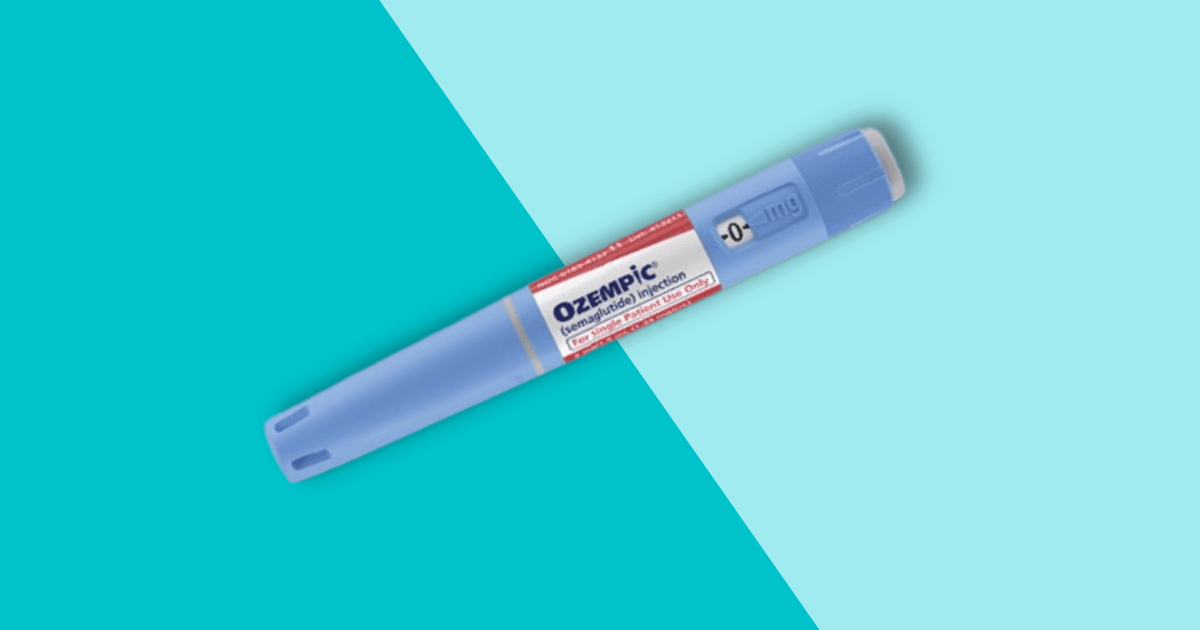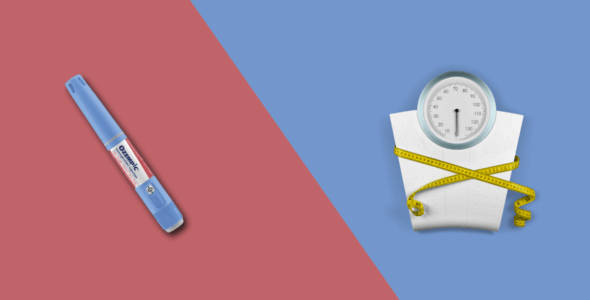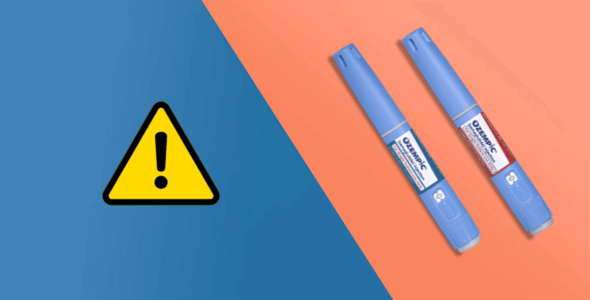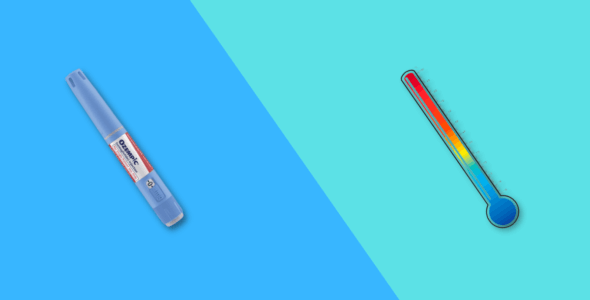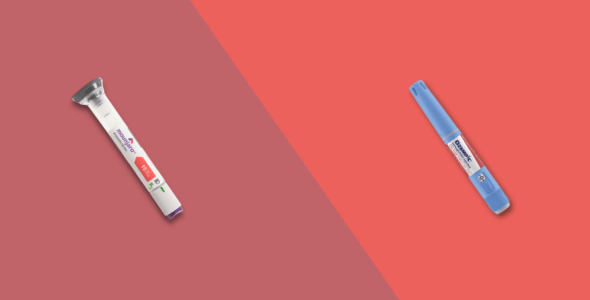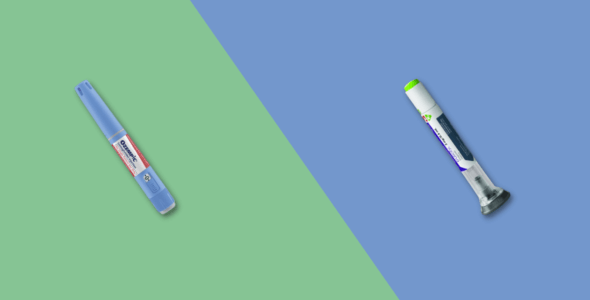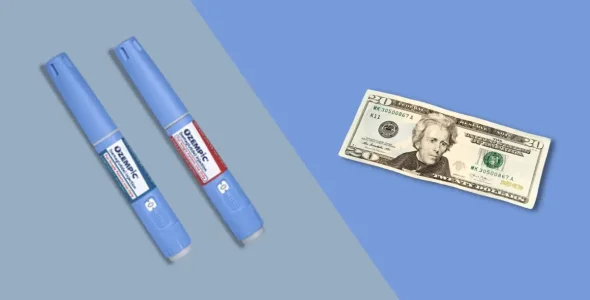How do I know when my Ozempic pen is empty?
Table of contents
Ozempic is one of the newer diabetic treatments available, and the Ozempic pen is one of the easiest options to use. The biggest advantage of using the Ozempic Pen is that you only need to take it once a week. Here we will talk about Ozempic, how it works, its side effects and interactions, and how to prepare, use and check that your Pen device isn’t empty using the dose counter on the pen.
What is Ozempic?
Ozempic is an antidiabetic medication manufactured by Novo Nordisk A/S, used to improve blood sugar control. It is approved by the US Food and Drug Administration (FDA) to:
- Lower blood sugar in addition to diet and exercise in patients with type 2 diabetes. It has not been studied in patients with pancreatitis and it is not indicated for use in type 1 diabetes mellitus or diabetic ketoacidosis
- To reduce the risk of major adverse cardiovascular events (heart attack and stroke) in adults with type 2 diabetes mellitus and established heart disease
Ozempic is a glucagon-like peptide 1 receptor agonist (GLP-1 receptor agonist) that helps lower your blood sugar levels. The active ingredient in Ozempic is semaglutide which stimulates insulin secretion and lowers glucagon secretion, depending on your blood glucose level. Ozempic also slightly delays gastric emptying (the time it takes your food to empty out of your stomach immediately after eating). This can help reduce the rate at which glucose circulates in your bloodstream.
More information on what is Ozempic
How to use Ozempic
Ozempic is available in injection form, in single-patient-use pens that deliver 0.25 mg (starting dose) or 0.5 mg per injection, or in single-patient-use pens that deliver 1 mg per injection. Your pen is designed to be used with NovoFine Plus needles up to a length of 8 mm.
Use Ozempic by injecting it under your skin as a subcutaneous injection, using a pre-filled pen once per week. As it’s a non-insulin medication, your doctor may prescribe Ozempic alongside insulin. Make sure you always use your Ozempic as directed by your doctor.
- Your healthcare provider will show you how to use Ozempic before you use it
- Inject Ozempic under the skin as a subcutaneous injection into your stomach, thigh, or upper arm. Do not inject it into a muscle or vein
- Ozempic is a weekly injection used at any time of the day, with or without food on the same day each week
- If you miss a dose of Ozempic, take the missed dose as soon as you remember. If more than 5 days have passed, skip the missed dose and take your next dose on your regular scheduled day
- Do not use the same injection site for each injection
- Continue your treatment program of diet, exercise, and body weight control while on Ozempic
- Do not share Ozempic pens with other people, even if the needle has been changed. Use a new needle each time you use Ozempic
- Store unopened Ozempic injection pens in the refrigerator before its first use. You can store opened Ozempic at room temperature or refrigerate it for 56 days. Keep the pen cap on when not in use. Store Ozempic away from heat, direct sunlight, and moisture
- Discard the pen 56 days after the first use, or if less than 0.25 mg is shown on the dose counter. Discard your Ozempic pen in a sharps container, according to state or local laws. Keep out of the reach of children and pets
Read the full prescribing information provided and speak with a healthcare professional for medical advice or about any changes to your dose so they can monitor and evaluate your condition.
How to prepare my Ozempic Pen
- Remove the pen cap
- Take a new Novofine needle. Tear off the paper tab and attach the needle. A drop of solution may appear at the needle tip. This is normal, but you must still check the flow if you are using a new pen for the first time
- Turn the dose selector to the flow check symbol () right past ‘0’. Make sure a drop appears at the needle tip before you use a new pen to make sure the solution is flowing
- Turn the dose selector until the dose counter shows your dose. You can turn the dose selector forwards or backward to the correct dose
How do I know when my Ozempic pen is empty?
Before your first injection with each new pen, check the flow remaining in the pen. To see how much Ozempic is left in the pen, use the dose counter on the pen.
Turn the dose selector until the dose counter stops at your prescribed dosage. If the dose counter shows a number that is above your Ozempic dosage of 0.25 mg, 0.5 mg, 1 mg, or 2 mg, this means your Pen still contains at least 0.25 mg, 0.5 mg, 1 mg or 2mg of Ozempic.
If the dose counter stops below 0.25 mg, 0.5 mg, 1 mg or 2mg, this means there is not enough Ozempic left for a full dose and you’ll need to start a new Ozempic pen.
Do not try to refill your empty pen. Once empty, the Ozempic pen must be disposed of without a needle on as instructed by your healthcare professional.
Get your Ozempic medication for only $49 per month
Get StartedWhat happens if you take too much Ozempic?
Ozempic is a long-acting treatment that can cause severe hypoglycemia (low blood sugar) if not used as prescribed. You can read more about what happens if you take too much Ozempic. If you take more than your prescribed dose, call your healthcare provider. To treat hypoglycemia quickly, eat or drink hard candy, crackers, raisins, drink fruit juice, or non-diet soda. Your doctor may prescribe you a glucagon injection in case of severe hypoglycemia.
RELATED: What happens if you take too much Ozempic?
Ozempic side effects
The most common side effects of Ozempic include:
- Nausea
- Vomiting
- Diarrhea
- Stomach pain
- Constipation
- Weight loss
In rare instances, Ozempic can cause more serious side effects. These can include:
- An increased risk of thyroid tumors, including cancerous tumors
- Inflammation of your pancreas (pancreatitis)
- Very low blood sugar (hypoglycemia)
- Diabetic retinopathy complications
- Gallbladder disease
- Acute kidney disease, kidney problems, and kidney failure
- Serious allergic reaction (shortness of breath)
Your doctor will assess the benefits of using Ozempic against your risk of side effects. Patients are encouraged to report negative side effects or adverse reactions of Ozempic to the FDA. Visit www.fda.gov/medwatch, or call 1-800-FDA-1088.
Ozempic drug interactions
Ozempic can interact with other medications. These include:
- Oral anticoagulants – warfarin
- Insulin – Ozempic can be used alongside insulin, but your doctor may change the dose of insulin you take and/or how often you take insulin
- Any other medications taken to treat type 2 diabetes – glyburide, glimepiride, metformin, repaglinide, and sulfonylureas such as tolbutamide
This list is not exhaustive and other drugs may interact with Ozempic, including prescription drugs and over-the-counter medicines, vitamins, and herbal products. Tell your health care provider about all of your medications including any supplements you are taking.
Ozempic contraindications
You should not use Ozempic if you:
- Are allergic to the active ingredient semaglutide, or any of the other ingredients in Ozempic
- Have other risk factors such as a family history of medullary thyroid carcinoma (medullary thyroid cancer)
- Have an endocrine system condition called multiple endocrine neoplasia syndrome type 2 (MEN 2)
- Have pancreatitis
- Have type 1 diabetes (Ozempic is for type 2 diabetes only)
- Are under 18 years of age
Talk to your doctor about your medical condition before using Ozempic if you:
- Have had any problems with your pancreas or kidneys
- Have ever had diabetic retinopathy
- Are pregnant or are planning to become pregnant
- Are breastfeeding or are planning to breastfeed
Medically reviewed
A medical professional has reviewed this article.


Jamie Winn, PharmD
Jamie Winn, PharmD
Dr. Jamie Winn received his Doctor of Pharmacy in 2002 from the University of South Carolina College of Pharmacy, Columbia, SC. Jamie is a medical reviewer for NiceRx.

